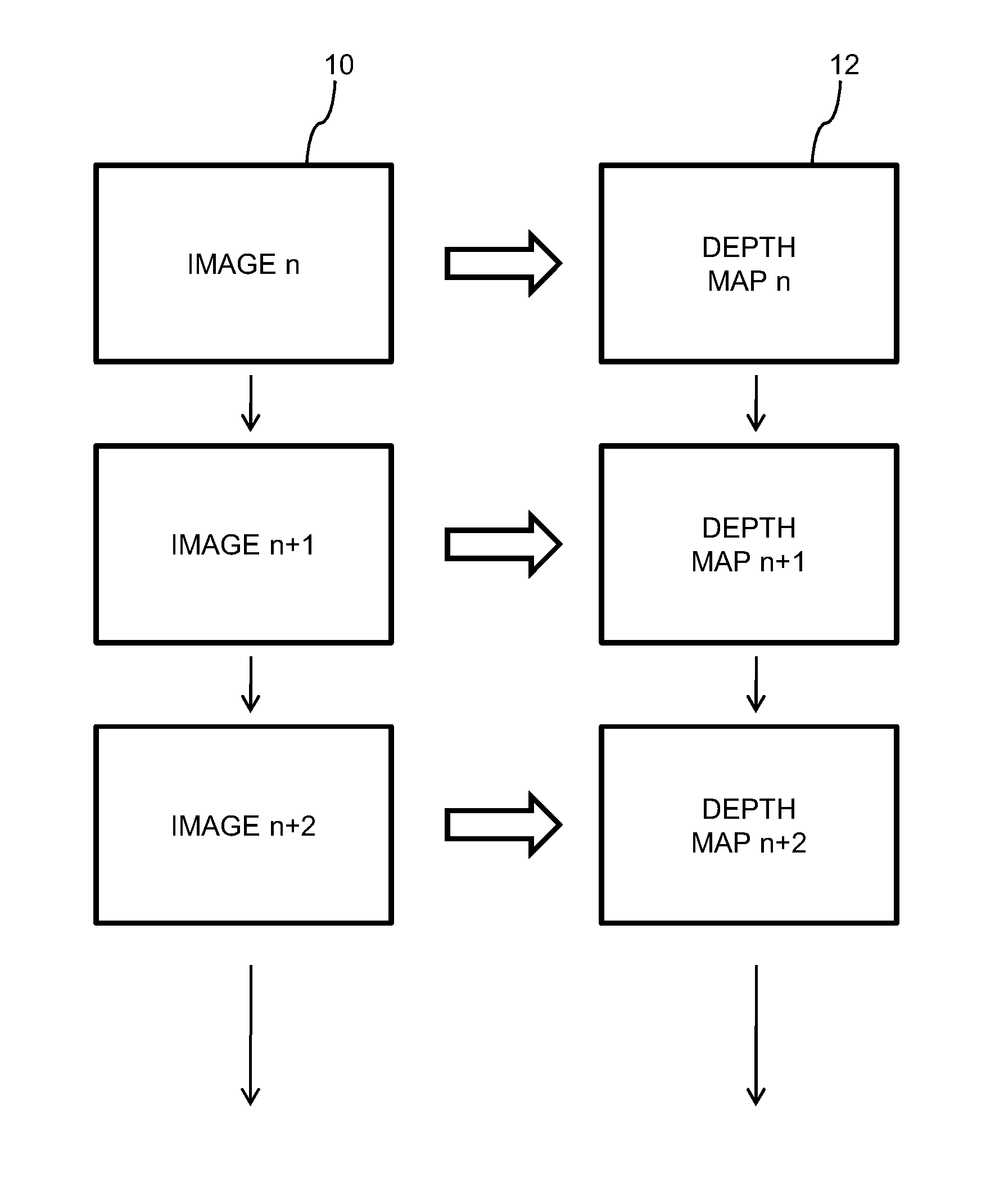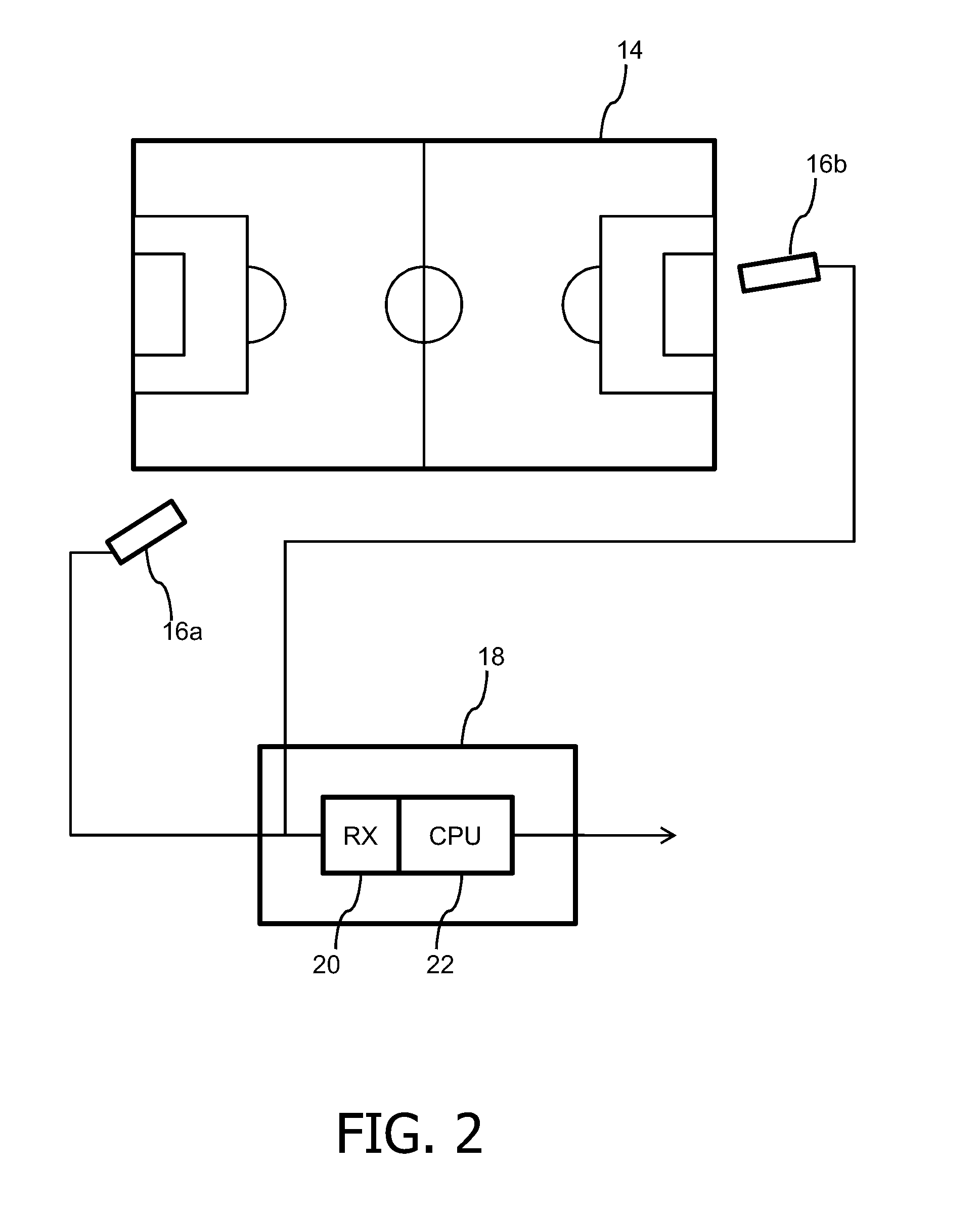Creation of depth maps from images
a depth map and image technology, applied in image analysis, image enhancement, instruments, etc., can solve the problems of difficult estimation in the air, inability to correctly place the depth map on the 3d model, and less effective approach
- Summary
- Abstract
- Description
- Claims
- Application Information
AI Technical Summary
Benefits of technology
Problems solved by technology
Method used
Image
Examples
Embodiment Construction
[0035]The basic principle is illustrated in FIG. 1. Video to be displayed comprises a series of images 10 also referred to as frames in many situations, which are used to generate a corresponding series of depth maps 12, each image 10 having a respective depth map 12. The generation of the depth map supports the generation of a 3D image at the ultimate display device, from the original 2D format, which is represented by the series of images 10. A depth map 12 can be used to generate one or more additional images that are then used, along with the original image 10, in an autostereoscopic or stereoscopic display device. A depth map 12 can also be used to generate a disparity map, if that is needed by the specific 3D application.
[0036]As discussed above, in respect of the prior art cited in the references, the generation of such depth maps 12 from source images 10 is well known. The present invention provides an improvement in the method of generating the depth maps 12, in order to pr...
PUM
 Login to View More
Login to View More Abstract
Description
Claims
Application Information
 Login to View More
Login to View More - R&D
- Intellectual Property
- Life Sciences
- Materials
- Tech Scout
- Unparalleled Data Quality
- Higher Quality Content
- 60% Fewer Hallucinations
Browse by: Latest US Patents, China's latest patents, Technical Efficacy Thesaurus, Application Domain, Technology Topic, Popular Technical Reports.
© 2025 PatSnap. All rights reserved.Legal|Privacy policy|Modern Slavery Act Transparency Statement|Sitemap|About US| Contact US: help@patsnap.com



